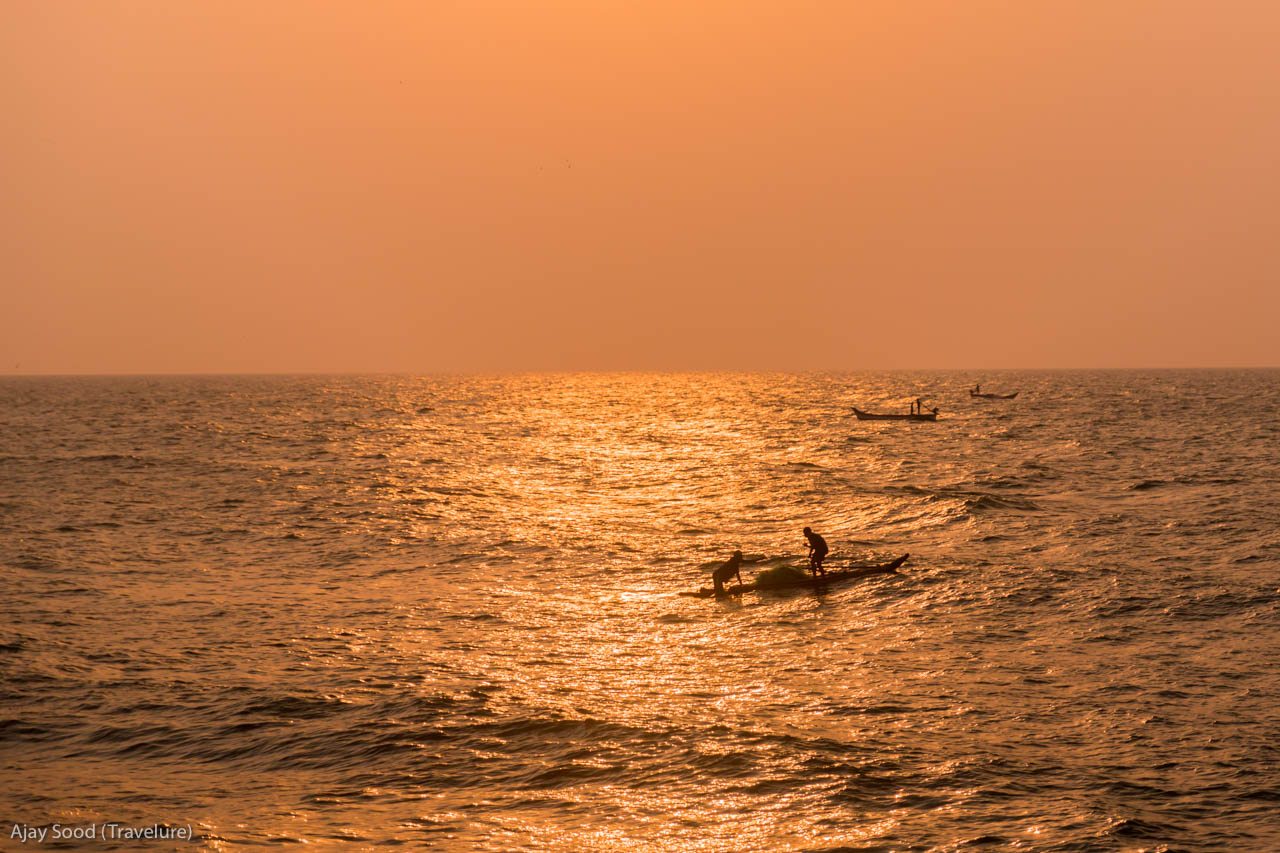Orchha – The Hidden Gem
Betwa – guess the name doesn’t ring any bell. A tiny tributary of the Yamuna, not navigable for half its length, and suited for minor rafting for enthusiasts, Betwa is a rocky river. During monsoons, it swells and cuts off the tiny island formed as it forks, as the one fragile bridge over it submerges. Here, on its banks, lies this quaint town founded in 1501 AD by Bundela chief, Rudra Pratap Singh – Orchha.

A border town of northern Madhya Pradesh and Uttar Pradesh, I have been thrice lucky to have visited it. A recent one, with the Times MP Passion Trail from 14th to 19th March 2020 before travel got hit by the COVID19 situation.
Rich in culture and architecture, few of the notable structures here are the Orchha palace and fort, Chaturbhuj (the one with four arms) Temple, Raja Ram Temple, Lakshmi Temple, and a cluster of cenotaphs.

Orchha – History
There’s an interesting story about how the name ‘Bundela’ came about. Legend has it that the first ruler of Orchha used to offer drops of blood to Goddess Kali, and thus the name Bundela – one who offers drops.
Another anecdote pertains to the Mughal emperor, Jahangir. As a prince, he fought with his father, Emperor Akbar, left home, and on his travels reached this territory ruled by the fierce Rajput tribe of Bundela. Orchha means ‘hidden’. The Bundela chief, Bir Singh Deo, extended his immense hospitality to the extent of building him an entire palace, Jahangir Mahal.

This help earned Orchha unparalleled Mughal patronage. And that’s when, with their coffers loaded, many charismatic palaces, temples, and buildings reflecting Bundela architecture came about.

The Fort Complex
Part of the Orchha Fort complex, Orchha Palace has two distinct sections – Raja Mahal (King’s Palace) and Jahangir Mahal (Palace). While Raja Mahal typifies Bundela architecture, the Jahangir Mahal is a sterling example of Mughal architecture. Besides these palaces, the dynasty founder Raja Rudra Pratap Singh built temples and other edifices within.

Raja Ram temple has idols of Lord Rama, his brother Lakshmana, Wife Sita, Maharaj Sugreev, and God Narsingh. In erstwhile Ranivaas or Rani Mahal, this is the only temple where people worship Ram as a king, and not as a God. Though the queen had built Chaturbhuj Temple to consecrate the idol, an interesting back story explains why the idol is in Raja Ram Temple.

Happy with the queen’s prayers in Ayodhya, Lord Rama appeared in child form. He agreed to accompany her to Orchha in her lap as a child on the condition that he will settle down wherever the queen rests him first. She settled in her palace chamber for the night after arriving, and that is where Lord Rama turned into an idol. Hence, the idol is in Raja Ram Temple, and not in Chaturbhuj Temple next to it. Today, they worship Lord Vishnu in Chaturbhuj Temple – a temple with one of the tallest temple vimanas (344 feet) amongst Hindu temples.

Other Monuments
Outside the fort complex, there is a cluster of cenotaphs – 14 in all. These Cenotaphs or Chattris are a homage to the ancestors of the Bundela kings, on the banks of Betwa. Showing superlative workmanship, there is one for every Bundela chief who ruled Orchha, till the lineage faded.

The architecture of these cenotaphs is an amalgam of Bundela and Mughal styles. Courtesy their tall vimanas, many resemble the Hindu temples. Raja Bir Singh Deo’s cenotaph stands apart from the rest as it bears a serrated dome, as against typical fluted onion domes often seen in Indo-Islamic and Central Asian architecture.

To the west of the Fort Complex is Lakshmi Temple. It has no idol of Goddess Lakshmi, (stolen) but has an altar meant for sacrifices. Very similar to the temples of the Tantric cult. It is interesting the temple’s walls resemble a fort’s, replete with slots for canons, to fire at the enemy.
For a compact town, this place swells with tourists during the season (October-March), with most tourists coming from France and Germany. With many hotels and resorts, including Amar Mahal, run by the descendants of the Bundela chief, the place is a tourist magnet.

A travel enthusiast will not regret visiting this place at least once. It also boasts a minor wildlife sanctuary. It is close to Matatila Dam, which is important for migratory waterbirds. And has another lesser-known place of interest, Kranti Sthal (Revolution Memorial), the memorial of freedom fighter, Chandrashekhar Azad.






















